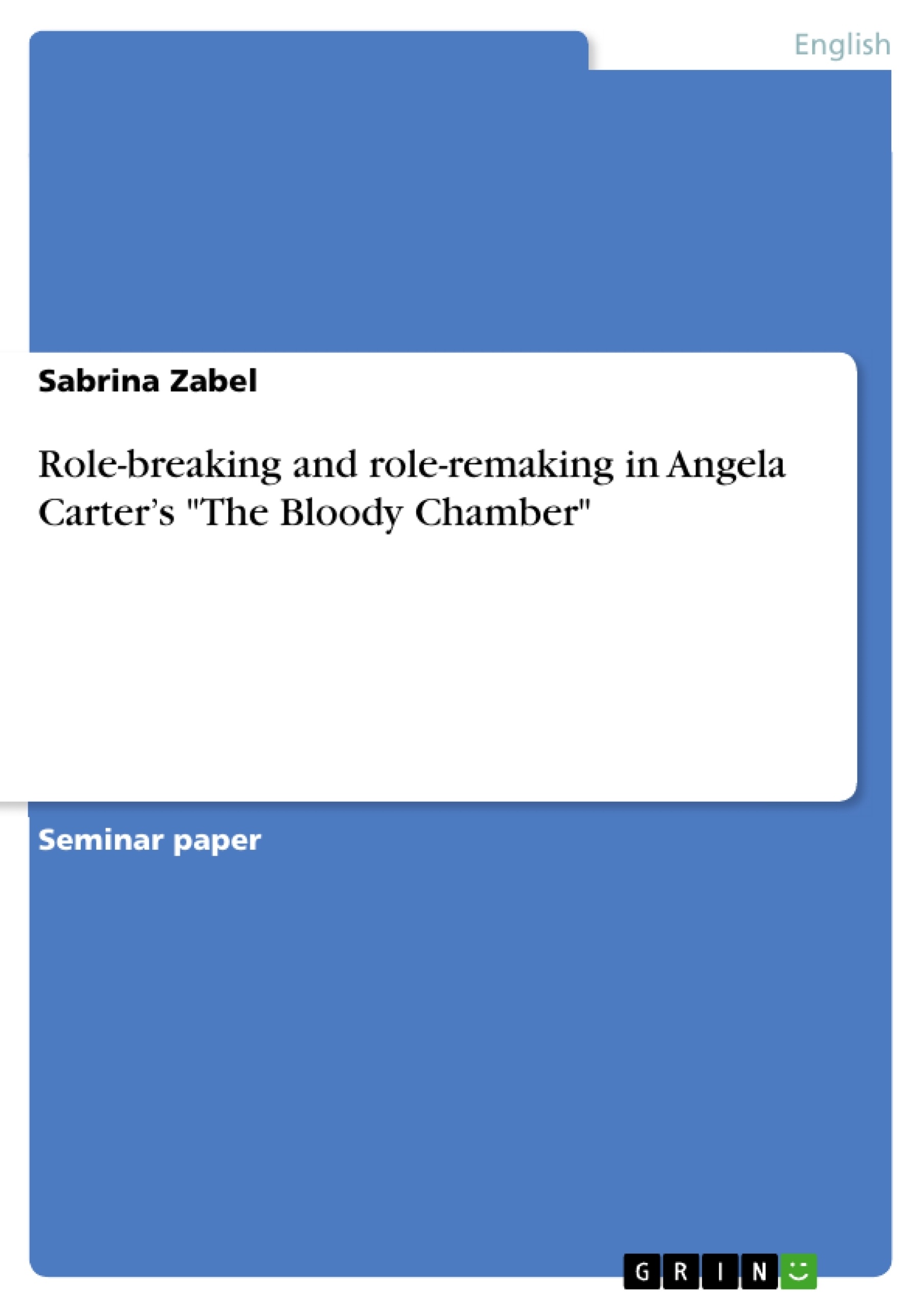The attainment of female subjectivity in spite of female sexual maturation, the oppression of female sexuality, the passive role of females bound in the confines of marriage, and as accumulated property are some of the issues that Carter addresses in The Bloody Chamber within the framework of the fairytale genre.
Angela Carter adopts Perrault’s fairy-tale Bluebeard in her story The Bloody Chamber and transfers it into a feminist rewriting. She breaks through the prescribed role-understanding of women and men in society.
Society defines women as being passive, men as being active in every domain of the everyday life. Angela Carter draws a picture against this stigmatization. She does not define women as being merely subversive; victims of male authority and simply fulfilling their role. She wants to show that women have the ability to gain independence and a free will by giving male qualities to her female characters or letting them not behave like society expects them to behave.
In society men are said to be powerful and oppressing their wives. They show true qualities of masculinity and exploit their wife’s innocence and naivety. Carter on the one hand portrays men as embodying this prescribed role, but also adds female qualities to their actions and behaviours, or being overpowered by their female counterparts.
This paper shall show in how far Angela Carter adapts constructed role models, changes them or invents new ones.
Therefore the paper is divided into two sections: The first gives a brief overview about the time period as this text is written against the background of the gothic era. The second part concentrates on The Bloody Chamber, which is first of all based on Perrault’s Bluebeard story - to realize the differences to the original and understand their functions with the help of the before described background knowledge. Afterwards, an analysis of each character in the story should make clear the concept of Carter’s role-breaking and role-remaking.
Table of Contents
- Introduction
- Female gothic writers and female characters
- Angela Carter's The Bloody Chamber
- Charles Perrault's Bluebeard as literary source
- Bluebeard's processing in The Bloody Chamber
- Role-reversal in The Bloody Chamber
- The two main characters in their marriage
- The ostensibly innocent protagonist
- The evil husband
- Function of mirrors and the male gaze
- The mother as the saviour
- The feminized piano-tuner
- The two main characters in their marriage
Objectives and Key Themes
This paper examines the portrayal of gender roles and female agency in Angela Carter's feminist retelling of the Bluebeard fairy tale, "The Bloody Chamber." The paper focuses on how Carter subverts traditional gender roles and explores themes of female subjectivity, sexuality, and power within the framework of the gothic genre.
- The subversion of traditional gender roles in "The Bloody Chamber"
- The representation of female subjectivity and sexuality
- The exploration of power dynamics between men and women
- The influence of the gothic genre on Carter's work
- The use of literary sources and intertextuality
Chapter Summaries
The introduction establishes the context for the paper, outlining the main themes and issues explored in "The Bloody Chamber." It highlights Carter's focus on female agency and challenges to traditional gender roles within the gothic genre.
The second chapter explores the portrayal of female characters in gothic literature, highlighting the recurring themes of suppression, objectification, and confinement. It discusses the development of female gothic writers and their attempts to subvert the male-dominated literary landscape.
The third chapter focuses on Carter's adaptation of the Bluebeard fairy tale in "The Bloody Chamber." It analyzes the literary source and examines how Carter reworks the traditional story to create a feminist retelling. This section also examines the role-reversal between the protagonist and the antagonist, exploring how Carter challenges traditional power structures.
Keywords
The main keywords and focus topics of this paper include gender roles, female subjectivity, gothic literature, feminist retellings, "The Bloody Chamber," Angela Carter, Charles Perrault, Bluebeard, power dynamics, and intertextuality.
- Quote paper
- Sabrina Zabel (Author), 2008, Role-breaking and role-remaking in Angela Carter’s "The Bloody Chamber", Munich, GRIN Verlag, https://www.grin.com/document/135158




